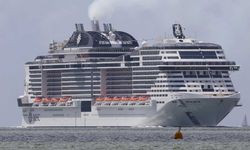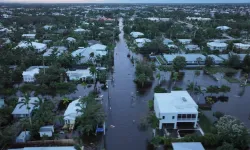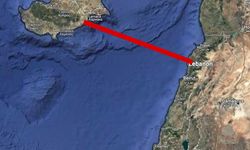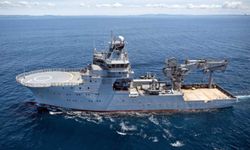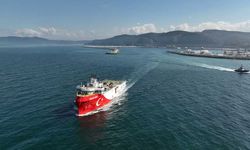1. Gannets & dolphins in New Zealand
On Lindblad’s National Geographic Orion expedition ship, the Coastal New Zealand journey takes up to 102 guests on an adventure either southbound from Auckland to Milford Sound or northbound from Milford to Auckland. The Bay of Islands, Great Barrier Island, Kaikoura and Dunedin feature among the stops on this coastal odyssey, which takes in spectacular landscapes such as the legendary fiords of Milford Sound, Doubtful Sound and Dusky Sound. Along the way, exploratory hikes led by expedition guides and expert naturalists bring you near Australasian gannets, little blue penguins (the world’s smallest penguin) and yellow-eyed penguins, with whale-watching and sightings of dusky dolphins a part of the experience in the seas off Kaikoura. The coastal New Zealand experience also offers insights into Māori culture, plus an introduction to the country’s culinary specialities and wines is also on the itinerary.
2. Reindeer & Arctic foxes in Greenland
Immense glaciers, jagged peaks and Arctic tundra make up the dramatic landscapes of what’s recognised as the world’s largest island, spanning an area of 836,330sq miles. It’s also the setting for the world’s largest national park, Northeast Greenland. This Arctic environment is the habitat for land mammals like the polar bear, reindeer, musk ox, moose and Arctic fox, with ringed seals, humpback and minke whales also seen off the coast. AE Expeditions offers the Greenland Odyssey via its new 71-cabin, 100% climate-neutral expedition ship, Sylvia Earle, which has a Citizen Science Centre on board. Cruises, aimed at getting passengers off the ship and into nature as much as possible, head between key coastal sites such as Kangerlussuaq Fjord, Prince Christian Sound and the UNESCO World Heritage Area of Ilulissat Icefjord with opportunities to spot the island’s wildlife from the rigid inflatable boats, on hikes and via kayak.
3. Pink dolphins in the Peruvian Amazon
Three vessels — the four-suite Delfin I, 14-suite Delfin II and 22-suite Delfin III — make up the fleet of Peruvian-owned Delfin Amazon — the first cruise company to have become a part of Relais & Chateaux. Expeditions on these three upscale vessels navigate the Pacaya-Samiria National Reserve in the Upper Peruvian Amazon. Authenticity is brought into the sustainably built vessels through the integration of craftsmanship by artisan communities, the sourcing of food from local growers for its gourmet Amazonian Peruvian cuisine, and community engagement initiatives, which have included developing a women’s artisan programme. Expeditions in the company of expert naturalist guides see you kayaking alongside pink river dolphins and catching sight of brown-throated sloths, Southern Amazon red squirrels, howler monkeys, pygmy marmosets and the myriad species of bird seen in this national reserve, known as the largest protected flooded forest in the world.

4. Penguins & finches in the Galápagos islands
An archipelago with as much as 97% of its land classified as national park and 51,352sq miles included within the Galápagos Marine Reserve, these Ecuadorian islands are among the world’s best for wildlife discovery. A wealth of endemic creatures, such as the Galápagos giant tortoise, Galápagos finch — the bird that helped Darwin come up with his theory on the evolution of species — and the Galápagos penguin, are among nearly 9,000 wildlife species found on land and in the water. In 2022, Aqua Expeditions became the latest operator to host cruises here, with the introduction of its 16-guest cruising yacht, Aqua Mare. This expedition cruise specialist, set apart by its commitment to conservation, community and sustainability, combines a small-group immersion into this wildlife-rich archipelago with an upscale onboard experience that includes the culinary concept of celebrated Peruvian chef Pedro Miguel Schiaffino.
5. Penguins in Antarctica
Among the newest cruises to arrive in Antarctica is the 2023-launched expedition ship Seabourn Pursuit. The luxurious expedition vessel, featuring interiors by Adam D Tihany and a wealth of contemporary art (following an exploration theme), is built to PC6 Polar Class standards for reaching remote environments. Joining the ship’s 132 all-balcony cabins is around 30,000sq ft of deck space with indoor and outdoor guest areas, including the Constellation Lounge, Discovery Centre and Colonnade restaurant, affording almost 270-degree views. Adding to wildlife viewing potential, imagery from miles around is broadcast from a 4K GSS Cineflex Camera mounted on the mast of the Constellation Lounge to monitors throughout the ship and in guest suites.
A 24-person expedition team of scientists, scholars and naturalists is on board this ship to lead a variety of expedition activities on the vessel’s 24 rigid inflatable boats and kayaks. A highlight of the vessel is its two state-of-the-art, environmentally friendly custom-built submarines, capable of taking six guests down to depths of 300 metres for an immersion into the marine habitat. During the ship’s time in Antarctica — reached via the Drake Passage from Ushuaia — days are spent kayaking among giant icebergs, whale-watching and trekking across the ice to see penguin colonies up close. The ship will return to Antarctica each winter.

6. Walruses & polar bears in Svalbard
Co-founded by two avid explorers, this small ship expedition specialist offers responsible exploration of remote corners of the polar regions. A team of expedition leaders and photography experts, among other specialists such as an Arctic researcher and ornithologist, provide an immersion into the Arctic and Antarctic environment. Following its inauguration in 2019, the micro-cruise operator launched its newest vessel, M/V Vikingfjord, this September. The 12-guest expedition ship — ice-strengthened so it can navigate the harder-to-reach areas only small ships can access — launched as the most environmentally friendly small ship in the polar regions, promising a 95% reduction in NOX emissions.
A large observation lounge, restaurant, hot tub and sauna join the eight spacious cabins on this ship, which features modern Scandinavian-style decor. Its two rigid inflatable boats facilitate land exploration throughout the voyage. The ship began its expedition offering in Norway’s Svalbard archipelago (where the ship will also be next summer), with exploration of this dramatic landscape’s glaciers, mountains and fjords beginning in the most northerly town in the world, Longyearbyen. Polar bears, whales and walruses can be spotted on rigid inflatable excursions, while hikes take you to historic sites, such as abandoned whaling stations, and entail sightings of reindeer and Arctic foxes.
7. Sloths in Costa Rica
Costa Rica is home to over 500,000 plant and animal species — from the hummingbird to the sloth — and 29 national parks. New luxury cruise operator Explora Journeys, which launched its first ship last August, hosts the 14-day Central America to Centre Stage in Los Angeles voyage in 2024, taking in wilderness areas of Costa Rica, such as Manuel Antonio National Park, and passing through Panama and Mexico.

8. Zebras & rhinos in South Africa
Winelands and Wildlife, a wildlife-focused cruise in South Africa, highlights the diversity of this country’s ecosystems. Spot zebra, giraffe and rhino, among other animals, at a game reserve in the Southern Karoo Highlands, pay a visit to the African penguins inhabiting Cape Peninsula’s Boulders Beach and ride the funicular railway to the top of Cape Point in the biodiverse Cape of Good Hope Nature Reserve.
9. Reefs & forests in Melanesia
A sub-region of Oceania, Melanesia stretches from New Guinea to the islands of Fiji, encompassing Fiji, Vanuatu, the Solomon Islands and Papua New Guinea. On Scenic’s Mysteries of Melanesia cruise, passengers on board Scenic Eclipse glimpse reef systems, forests, cliffs, coves and rocky headlands. The ship’s Discovery Team leads snorkelling, diving and hiking excursions, with a naturalist also on board to share their expertise.
10. Lemurs in Madagascar
Rich in endemic species, Madagascar is the only country where lemurs live in the wild; other curiosities like the fossa and chameleon are also found on this island of forests and mangroves, whose coastal areas are home to turtles and whale sharks. The Adventure in Madagascar cruise takes in the northern tip and its islets, as well as Ankarafantsika National Park and the UNESCO biosphere reserves of the south west.
11. Corals in Indonesia
Komodo, Raja Ampat and the Banda Sea’s Spice Islands are all a part of the Coral Triangle — known as ‘the Amazon of the Seas’ for its biodiversity, including almost 600 coral species. Manta rays, dolphins and dugongs are among the marine species living here. Aqua Expeditions hosts multi-day voyages through each archipelago on its 15-suite explorer yacht Aqua Blu, with expert guides also on board.
Via: National Georaphic


